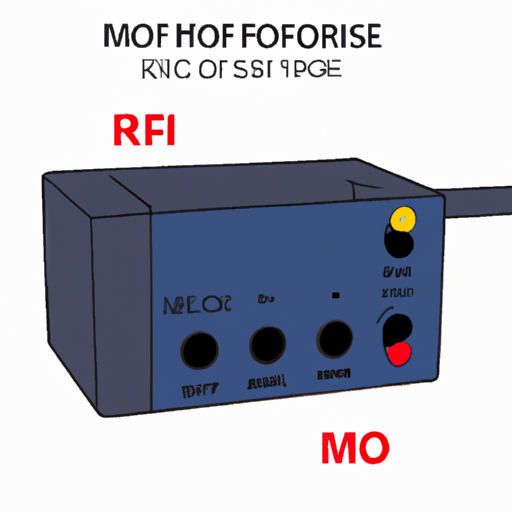Choosing the right spot RF increase block amplifier is crucial for ensuring optimal performance and signal quality in various applications. In this article, we will discuss the key factors to consider when selecting an RF increase block amplifier, including frequency range, gain, noise figure, linearity, power requirements, and cost. By understanding these factors, you will be able to make an informed decision and select the most suitable amplifier for your specific needs.

2. Gain: Gain is a measure of how much an amplifier can increase the power of the input signal. It is typically expressed in decibels (dB). The required gain depends on the specific application and the desired signal strength. Determine the minimum gain needed to achieve the desired output power and select an amplifier with a gain that meets or exceeds this requirement.
3. Noise Figure: Noise figure is a measure of the amount of noise added by the amplifier to the input signal. It is expressed in decibels (dB) and represents the degradation of the signal-to-noise ratio (SNR). Lower noise figures indicate better performance. Consider the sensitivity of your application and select an amplifier with a noise figure that ensures an acceptable SNR.
4. Linearity: Linearity refers to the ability of an amplifier to faithfully reproduce the input signal without distortion. In some applications, such as wireless communication systems, linearity is crucial to maintain signal integrity. Look for amplifiers with high linearity specifications, such as low intermodulation distortion (IMD) and high third-order intercept point (IP3), to ensure accurate signal reproduction.
5. Power Requirements: Consider the power requirements of your application when selecting an amplifier. Determine the available power supply and the maximum power consumption of the amplifier. Ensure that the amplifier can operate within the available power budget without causing any issues or requiring additional power sources.
6. Cost: Cost is an important consideration in any purchasing decision. Set a budget for your amplifier and compare the prices of different options. However, it is essential to strike a balance between cost and performance. Cheaper amplifiers may compromise on specifications, so ensure that the selected amplifier meets your performance requirements within your budget.
7. Reliability and Support: Consider the reliability and support provided by the amplifier manufacturer. Look for reputable manufacturers with a track record of producing reliable products. Check for warranty options, technical support, and availability of spare parts. A reliable amplifier with good support can save you time and money in the long run.
In conclusion, selecting the right spot RF increase block amplifier requires careful consideration of various factors such as frequency range, gain, noise figure, linearity, power requirements, cost, reliability, and support. By evaluating these factors and understanding your specific application requirements, you can make an informed decision and choose an amplifier that will deliver optimal performance and signal quality.
Choosing the right spot RF increase block amplifier is crucial for ensuring optimal performance and signal quality in various applications. In this article, we will discuss the key factors to consider when selecting an RF increase block amplifier, including frequency range, gain, noise figure, linearity, power requirements, and cost. By understanding these factors, you will be able to make an informed decision and select the most suitable amplifier for your specific needs.

2. Gain: Gain is a measure of how much an amplifier can increase the power of the input signal. It is typically expressed in decibels (dB). The required gain depends on the specific application and the desired signal strength. Determine the minimum gain needed to achieve the desired output power and select an amplifier with a gain that meets or exceeds this requirement.
3. Noise Figure: Noise figure is a measure of the amount of noise added by the amplifier to the input signal. It is expressed in decibels (dB) and represents the degradation of the signal-to-noise ratio (SNR). Lower noise figures indicate better performance. Consider the sensitivity of your application and select an amplifier with a noise figure that ensures an acceptable SNR.
4. Linearity: Linearity refers to the ability of an amplifier to faithfully reproduce the input signal without distortion. In some applications, such as wireless communication systems, linearity is crucial to maintain signal integrity. Look for amplifiers with high linearity specifications, such as low intermodulation distortion (IMD) and high third-order intercept point (IP3), to ensure accurate signal reproduction.
5. Power Requirements: Consider the power requirements of your application when selecting an amplifier. Determine the available power supply and the maximum power consumption of the amplifier. Ensure that the amplifier can operate within the available power budget without causing any issues or requiring additional power sources.
6. Cost: Cost is an important consideration in any purchasing decision. Set a budget for your amplifier and compare the prices of different options. However, it is essential to strike a balance between cost and performance. Cheaper amplifiers may compromise on specifications, so ensure that the selected amplifier meets your performance requirements within your budget.
7. Reliability and Support: Consider the reliability and support provided by the amplifier manufacturer. Look for reputable manufacturers with a track record of producing reliable products. Check for warranty options, technical support, and availability of spare parts. A reliable amplifier with good support can save you time and money in the long run.
In conclusion, selecting the right spot RF increase block amplifier requires careful consideration of various factors such as frequency range, gain, noise figure, linearity, power requirements, cost, reliability, and support. By evaluating these factors and understanding your specific application requirements, you can make an informed decision and choose an amplifier that will deliver optimal performance and signal quality.












